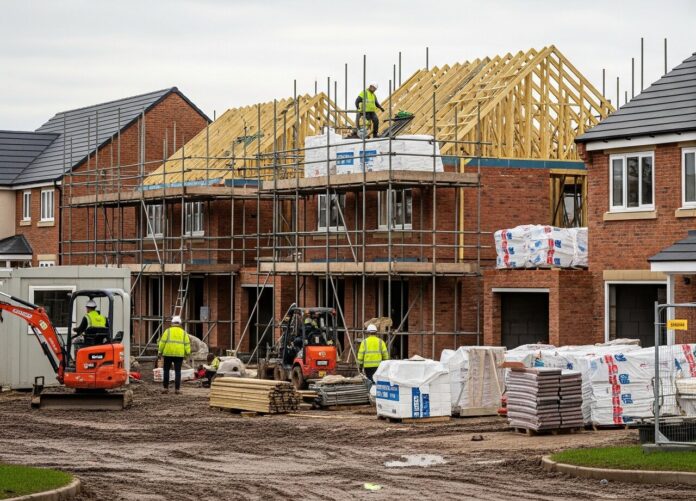UK construction output rose in the second quarter of 2025 but a sharp fall in new orders is fuelling concerns about the sector’s ability to sustain growth.
Figures from the Office for National Statistics show total construction output increased by 1.2% between April and June compared with the first quarter, with new work up 1.1% and repair and maintenance rising by 1.4%.
On a monthly basis, output edged up 0.3% in June, driven entirely by a 1.2% increase in repair and maintenance. New work fell by 0.4% over the month.
The strongest contributors to June’s rise were private housing repair and maintenance, which jumped 3.7%, and non-housing repair and maintenance, up 0.8%.
FRAGILE SECTOR
However, total new orders fell by 8.3% (£976 million) in the second quarter, mainly due to lower demand for infrastructure and private commercial projects.
The ONS data highlights a split in the market, with maintenance work holding up while new project pipelines weaken.
Economists say sustained falls in orders could feed through into slower activity later this year unless confidence and investment return

Neil Leitch, managing director of development finance at Hampshire Trust Bank, warned that despite some positive signs, the sector remained fragile.
He said: “A rise in new private housing is good to see, but output is still below where it was before the pandemic, so there is a long way to go. Approvals on paper do not build homes.
“Unless the firms who do the work are financially stable and have the people they need, those permissions will just sit there. That’s the real risk – approvals without delivery.
“A lot of SME construction firms are under pressure.”
“A lot of SME construction firms, and the subcontractors and suppliers they rely on, are under pressure.
“Begbies Traynor’s figures show more are in financial distress, and ONS data has construction as the slowest growing sector of the economy in the first quarter. When delivery depends on businesses operating on fine margins, the sector is always one shock away from stalling.”
MISSED HOUSING TARGETS
And he added: “We will not hit housing targets unless the whole delivery chain is strong enough to meet them. That means giving planning teams the resource to make timely decisions, backing SME construction businesses so they can commit to projects, and replacing the skills we are losing as the workforce ages.
“Without that capability on the ground, the ambition to build more homes will stay just that, an ambition.”





